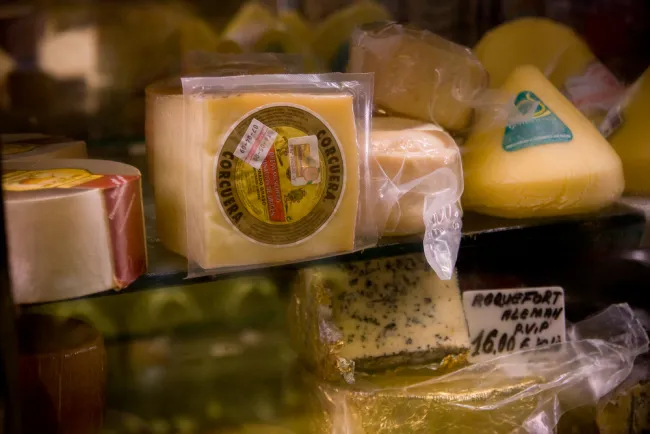This paper examines some of the environmental trade-offs associated with using multilayered biodegradable packaging made of thermoplastic starch and polyhydroxyalkanoate.

It finds that the greenhouse gas emissions associated with producing both the biodegradable packaging and a non-biodegradable option (polypropylene) are similar in the manufacturing stage, but that the biodegradable option produces higher emissions as it breaks down in landfill. The environmental impacts therefore depend strongly on whether methane is captured at the landfill site and how efficient the capture process is.
Furthermore, food waste accounts for a significant fraction of greenhouse gas emissions created during food’s life cycle, in the case that waste is included in the system boundary (beef and cheese were used as example foods). This is because food waste represents a waste of avoidable embedded emissions. The packaging type can affect the level of food waste, e.g. by preventing or failing to prevent the food from going off. This interaction is key: if biodegradable packaging reduces food waste compared to using non-biodegradable plastic, the additional methane emissions in landfill can be offset; if biodegradable packaging increases food waste, biodegradable packaging might increase overall emissions over using non-biodegradable packaging.
The paper doesn’t look at the other impacts of different kinds of packaging, such as the effects on ocean wildlife, and it’s not clear whether food waste levels would still be key for foods other than beef and cheese.
Abstract
From a waste management perspective, high-barrier, multi-layer, biodegradable food packaging could be a useful replacement for current multi-layered packaging that is non-recyclable and non-degradable. Whilst there is still technical research required, it is envisioned that a biodegradable thermoplastic starch (TPS) and polyhydroxyalkanoate (PHA) layered material could be a promising target. However, there is currently limited research identifying what environmental trade-offs are associated with using such a material – meaning there is no guidance regarding what design characteristics are important to consider during development of such packaging. The aim of this study was to quantify the greenhouse gas (GHG) trade-offs associated with using the proposed biodegradable packaging and identify the important design considerations. To our knowledge this is the first study to discuss the implications of including food wastage when assessing biodegradable food packaging materials. It also considers the impacts of landfill methane capture efficiency, which is an important aspect as biodegradable packaging may release methane when disposed of in a landfill whereas non-biodegradable packaging is inert. However, a key result is that when food waste is included in the system boundaries, it contributes over 50% of the GHG emissions associated with the system, regardless of whether the package is biodegradable or not. This shows that even for biodegradable packaging, reducing food waste is a key design consideration. In fact, the negative environmental impacts associated with disposal of a PHA-TPS packaging in landfill with low gas capture rates can actually be offset if the package reduces food wastage (beef) by approximately 6%. The overarching result is that a PHA-TPS food packaging only delivers positive GHG outcomes if it reduces food wastage or increases the viability of biological food waste processing.
References
Dilkes-Hoffman, L.S., Lane, J.L., Grant, T., Pratt, S., Lant, P.A. and Laycock, B., (2018). Environmental impact of biodegradable food packaging when considering food waste. Journal of Cleaner Production, 180, pp.325-334.
Read the full paper here. See also the Foodsource resource How are food losses and waste an environmental concern?




Comments (0)